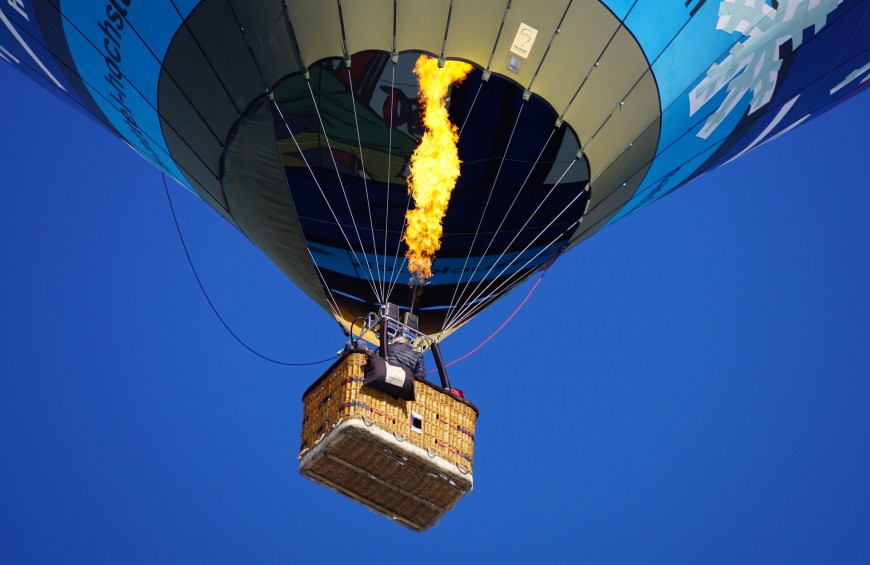
The principle of operation of the modern hot air balloon is absolutely identical to that experienced by the Montgolfieres brothers at the end of the 18th century.
The basic principle is the same one that allows ships to float, in fact the differences are in the materials used for the construction and in the system adopted for heating the air. In place of a brazier burning straw and wool, sophisticated propane burners are used, the result of careful and scrupulous technological research.
We know for sure therefore that a balloon flies carried by the wind and that the pilot is not in a position to determining exactly where it will land, being able however to control with great precision the flight quota. This is very important, because following the currents at the various altitudes can predict the course within certain limits and with much approximation. Nothing can be established precisely, because of the weather conditions that can change rapidly.

The parts that make up a monglfiera are essentially three: casing, burner and carrycot. Let's discover them in detail!
The casing (more commonly called balloon) must contain the air heated by the burner and has a structure formed by nylon panels sewn on vertical and horizontal belts. At the top of the flask, the vertical belts are assembled in a "crowning ring", while at the base they have an extension composed of steel cables, fixed in turn to the "load panel" on which the burner is mounted.
The highest part of the casing is open but can be clearly closed from the inside by means of a circular panel. Thanks to the pressure exerted by the hot air, the panel is held in position thus preventing the escape of the hot air, while remaining possible opening by the pilot, to accelerate the descent into flight or to facilitate the deflation of the balloon after landing. Because of its shape it is called "parachute valve".
The burner has the function of heating the air inside the casing. The burner is usually double, it remains fixed to the "load panel" by means of a gimbal joint which allows the flame to be directed precisely inside the casing and is supplied with liquid propane gas contained in special steel or aluminium tanks housed inside the basket. Opening the valves of the tanks, the propane reaches a coil through which it returns to the gaseous state thanks to the heat, it mixes to the air and is ignited from time to time by a pilot flame fed by the same cylinders. The gas delivery to the burner is regulated by the pilot by means of special handcuff valves, allowing the ignitions even short for making ascent of altitude.
The spacecraft is attached to the casing and remains hanging there during the flight phase. The material with which it is generally made is the woven wicker (that is why it is called basket) and while it is a wonder among the non-workers, this material still offers the best compromise between robustness, lightness, elasticity and cost, without neglecting the charm of aesthetics and natural material. The supporting structure is made of metal tubes and the bottom is reinforced by wooden stringers. At the corners of the basket are housed the gas tanks, while along the sides are placed the navigation instruments and other equipment on board.
The essential on-board instrumentation for a hot air balloon is the altimeter, capable of measuring and indicating the flight share of the balloon. The apparatus detects the variation of the atmospheric pressure with respect to the height above sea level and it is necessary to calibrate the instrument with a certain frequency. Another necessary instrument is the variometer, which refers to the vertical velocity of the ball, that is the speed of ascent and descent. Obviously the GPS cannot be missing, very useful in all situations where the pilot absolutely needs to know with confidence where he is, at what altitude he is at and at what speed he is flying. To be able to communicate, there are two radio transmitters: the air radio to keep in constant communication with the authorities and the radio to contact their ground crew and with the other hot air balloons. Finally, the thermal probe is placed on board, also very important because it allows to control the temperature in flight avoiding to exceed the limits established by the manufacturer.